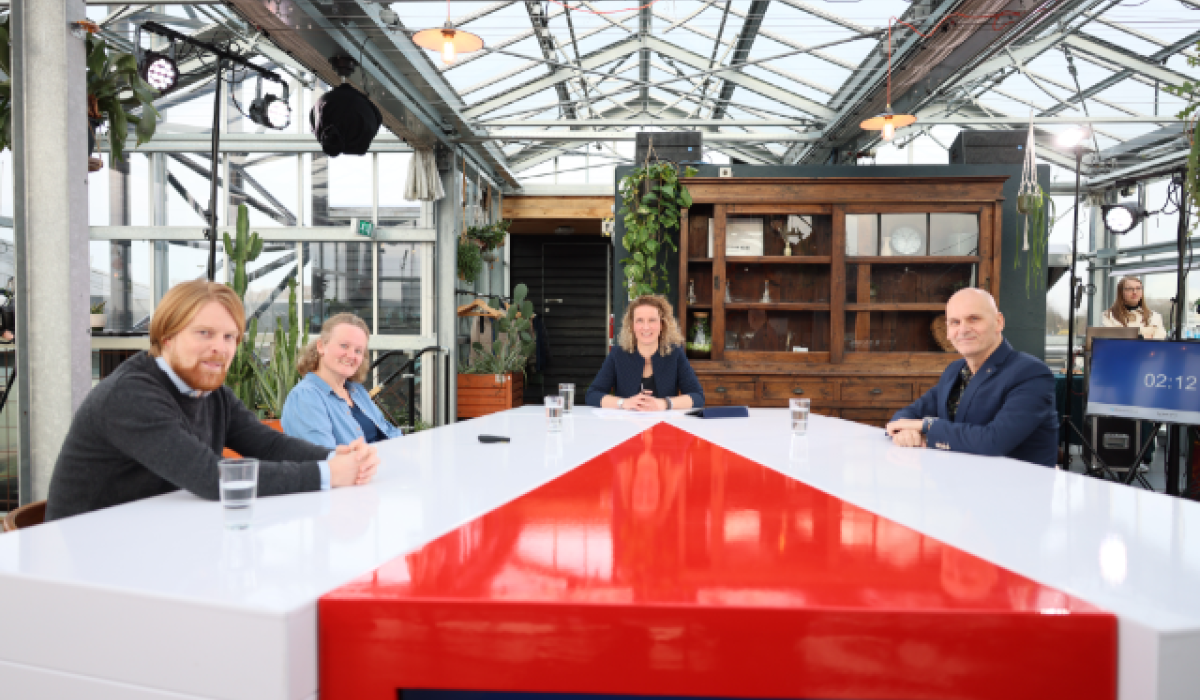
Impression Webinar Medify & Webcamconsult: 'image calling in healthcare
7 December was the day. After months of preparation, our webinar on the implementation of image calling in healthcare went live. Via an online stream, interested parties from the healthcare sector followed the talks that were broadcast from Medify's studio in Amsterdam.
Central theme here was: how to remove technical and organisational barriers as a healthcare organisation when implementing screen-based care.
7 December was the day. After months of preparation, our webinar on implementing screen calls in healthcare went live. Via an online stream, interested parties from the healthcare sector followed the talks that were broadcast from Medify's studio in Amsterdam.
The central theme here was: how to remove technical and organisational barriers as a healthcare organisation when implementing screen-based care.
Please note that the webinar was broadcast from Medify's studio in Amsterdam.
Moderator Jo Roorda of Medify presented the webinar and entered into a discussion with the four speakers.
After the introduction, Esther Barsom of UMC Amsterdam explained, among other things, a survey conducted by the AMC among 1,000 patients about their experiences with the use of video consultations. This shows that 42% are open to video consultations in outpatient care. In addition, the majority prefer a video consultation to a telephone appointment. She also addressed two studies comparing the physical consultation with a video consultation.
Dermatologist at Bravis Hospital and co-founder of Webcamconsult Dick van Gerwen followed as the second guest. One of the founders of screen care, he explained that the success of the dermatology department at the Brabant hospital was the reason for the development of the virtual consulting room. Thanks to a good review in Elsevier, the whole of the Netherlands knew how to find the dermatology department at Bravis Hospital. Van Gerwen did not want patients to visit in person for every consultation because of the occasionally long travelling times. On this, the first version of Webcamconsult was developed.
Peter Krol of Medify discusses the implementation of screen care in more detail below. It is not only the time of the consultation that is important, but also: what kind of consultation fits best and what is needed here. Here, Medify focuses in particular on the transformation process, what is needed for the patient and practitioner to enable remote care. Medify will first provide information to the patient to determine whether a video consultation is necessary. By removing administrative tasks beforehand, the threshold for using a video consultation is lowered.
The last speaker Jellien Makonga-Braaksma of Meander Medical Centre gives quite a detailed account of how the implementation of screen care took place at MMC. For instance, she outlines the technical framework, such as hardware, software and browser type. She also tells about the implementation and training of practitioners and doctors' assistants. Here it turned out that individual training has a great added value on acceptance and use.
Take home messsage
In closing, the guests were asked to pass on a message to viewers. Van Gerwen says not to meet for too long but just to do it. According to Van Gerwen, a video consultation contributes to quality care. Krol says he thinks the number of video consultations is still shockingly low at around 1%. He recommends moving away from non-committal and agreeing on standards. Makonga-Braaksma gives as a take-home message not to be put off by technology, it gets used to it and is a better way of consulting. Esther Barsom concludes with the message to give the webcam consultation a clear place within the process so that everyone knows why and when it takes place.
 English
English  Nederlands
Nederlands  Français
Français  Deutsch
Deutsch  Italiano
Italiano  Polski
Polski  Português
Português  Español
Español  Svenska
Svenska 

